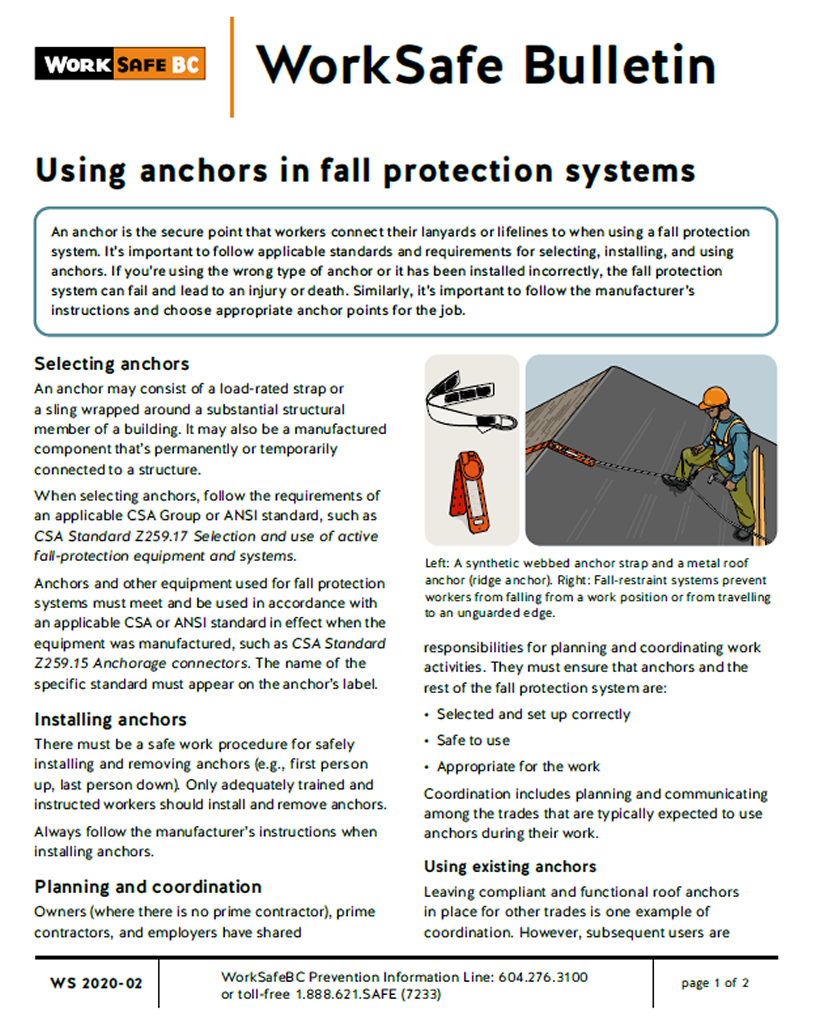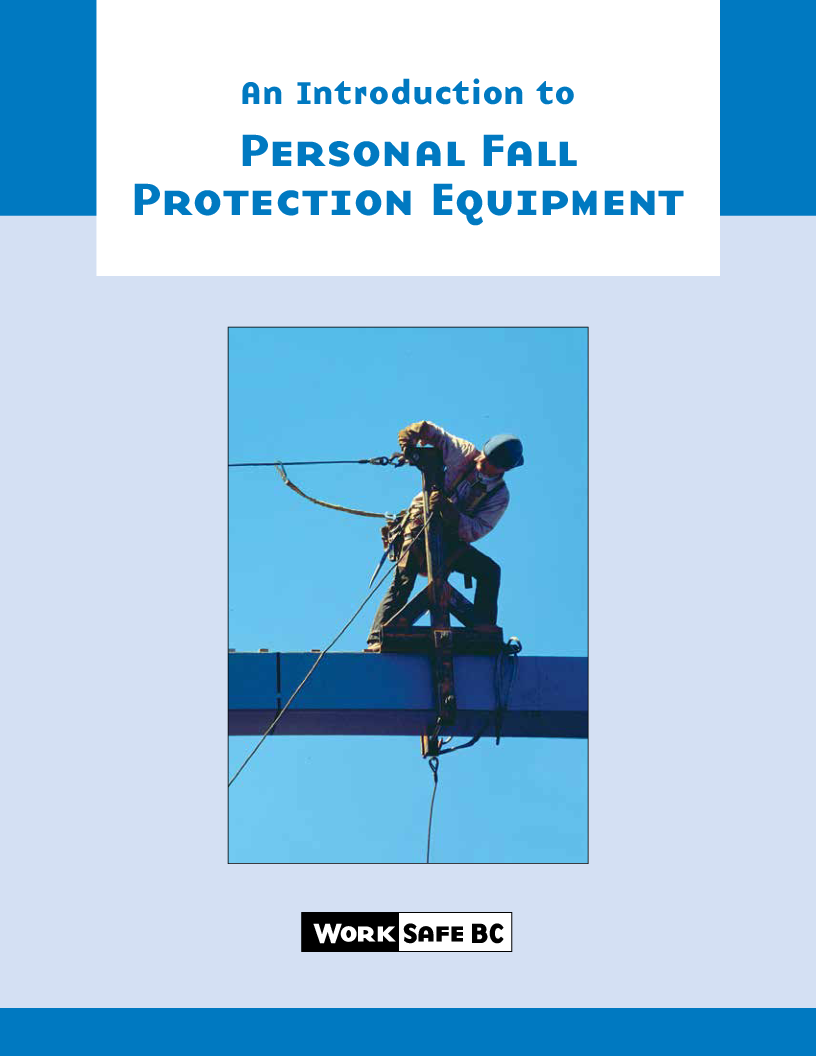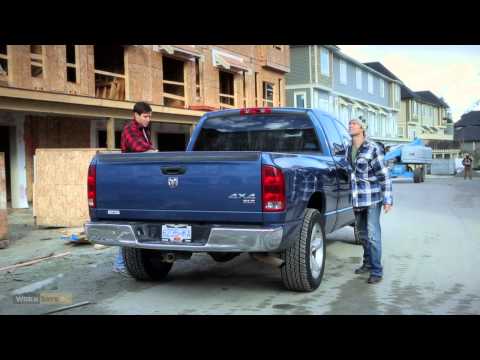Fall protection
Falls from heights, even relatively low elevations, can result in serious injuries. The proper use of fall protection equipment — in addition to planning, supervision, and training — can reduce or eliminate the risk of falling. The Occupational Health and Safety Regulation requires workers to use fall protection systems when they could fall from a height of 3 m (10 ft.) or more, or where a fall from a lesser height could result in serious injury.
Fall protection hierarchy
The fall protection hierarchy must be used when choosing methods to eliminate or control fall hazards. The steps are listed in the order in which they should be considered.
-
1
Guardrails
Where fall hazards cannot be eliminated, permanent or temporary guardrails or handrails form a protective barrier around an opening or edge to prevent a fall to a lower level.
-
2
Fall restraint
After eliminating fall hazards and installing guardrails, a fall restraint system is the next level in the fall protection hierarchy.
Fall restraint systems prevent you from falling through either travel restriction or work positioning. With travel restriction, workers are attached to a fixed-length line that prevents them from travelling to close to an opening or edge.
-
3
Fall arrest
When it's not possible or practical to use a fall restraint system, the next line of protection is fall arrest.
A fall arrest system (including a lanyard or lifeline, a harness, and, most importantly, an anchor) protects you after a fall by stopping you from hitting the surface below
-
4
Work procedures
If guardrails, fall restraint, or fall arrest are not practicable, or will result in greater risk of injury, contact the Prevention Information Line to discuss alternative safe work procedures that are acceptable to WorkSafeBC.
Highlights
- New resources help construction employers create fall protection plans specific to their worksites Published on: May 20, 2021
- New bulletin provides guidance on the safe use of anchors in fall protection systems Published on: June 18, 2020




